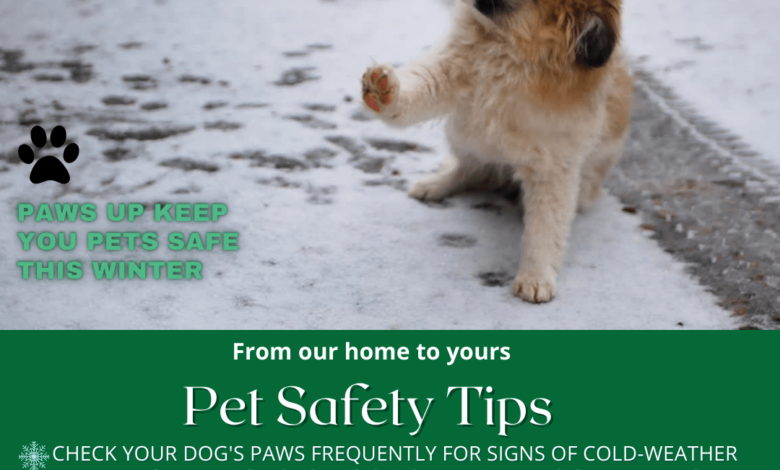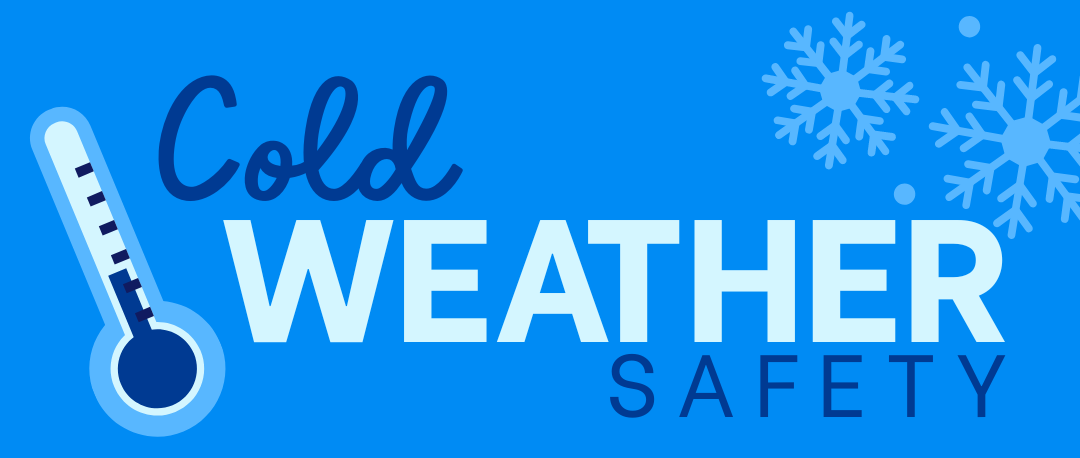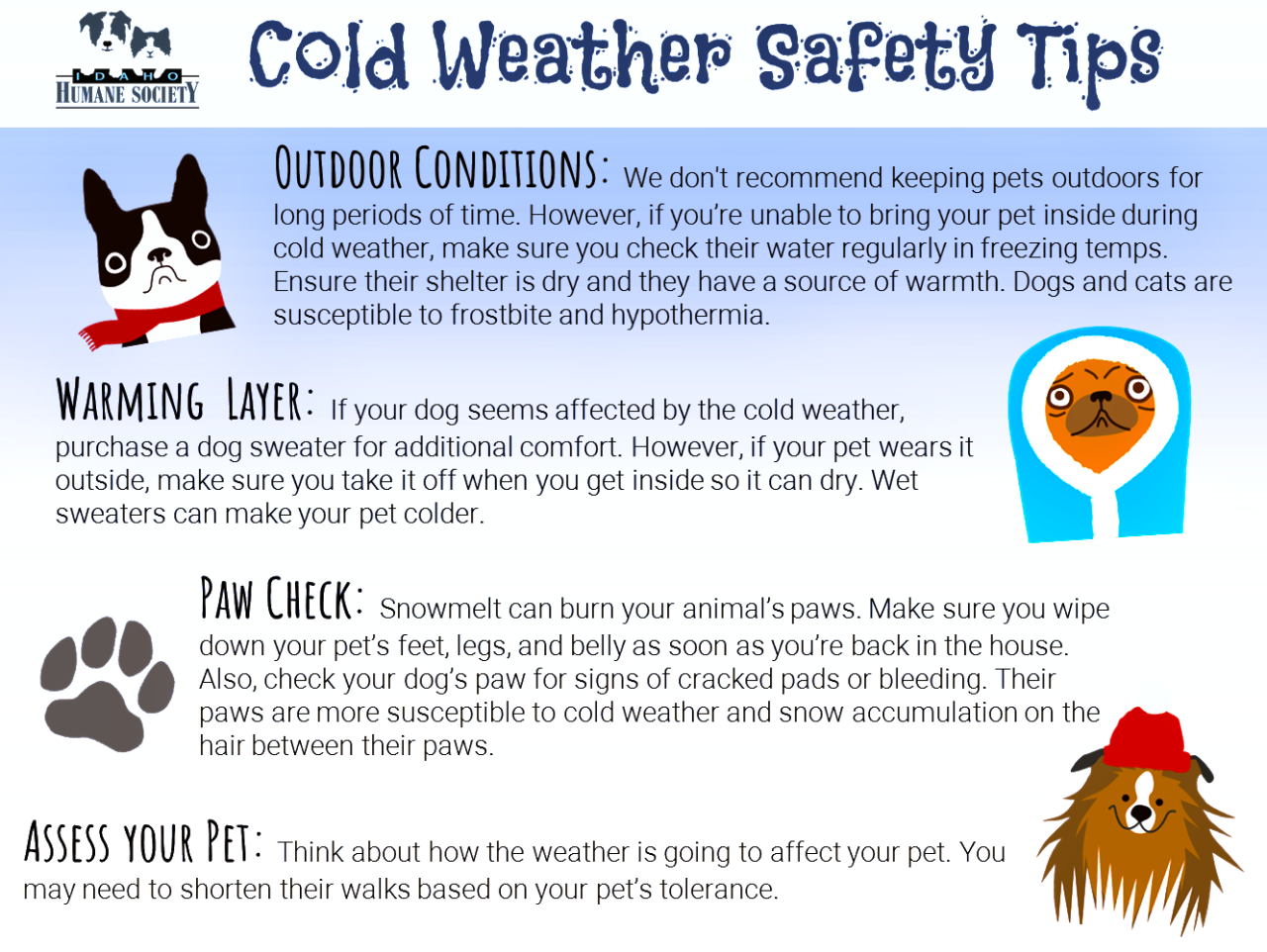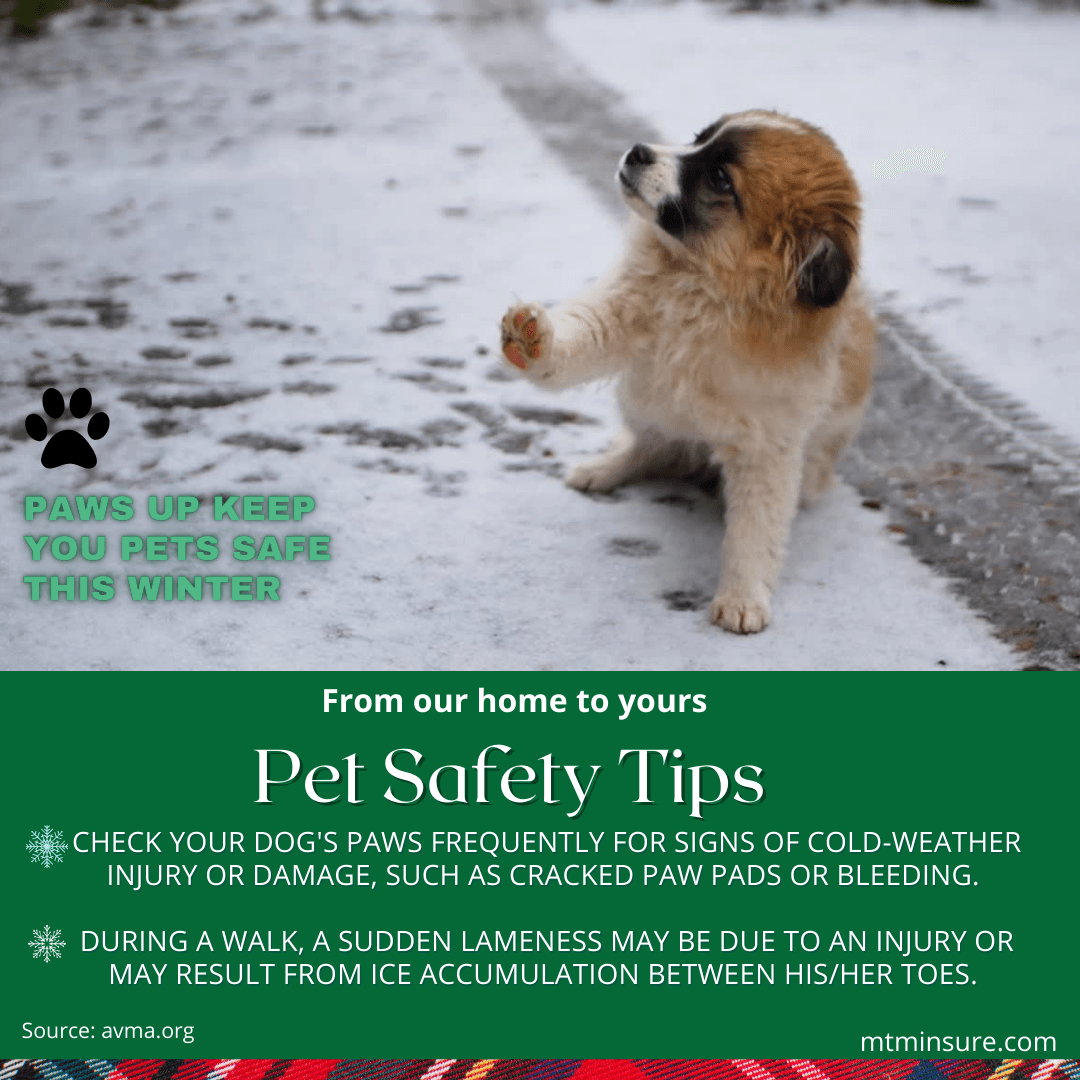
Pet Care Cold Weather Safety Guide
Pet care cold weather safety is crucial for keeping our furry friends safe and healthy during the chilly months. Understanding the risks of cold weather and taking proactive measures can prevent potential health issues and ensure your pet enjoys the season. From recognizing the signs of hypothermia to creating the right shelter, this guide covers everything you need to know.
This comprehensive guide delves into various aspects of pet care during cold weather, providing practical tips and insights to keep your beloved companions comfortable and safe. We’ll explore essential shelter options, safe outdoor activity strategies, and vital nutritional considerations to ensure your pets thrive in winter’s embrace.
Protecting Pets from the Cold
Winter’s icy grip can be a significant threat to our furry friends. Just as humans need to adjust their routines and gear up for cold weather, pets require special care and attention to remain safe and comfortable. This article delves into the crucial aspects of keeping pets safe during cold snaps, focusing on prevention, identification, and preparedness.Understanding the unique vulnerabilities of pets to cold weather is essential for responsible pet ownership.
Pets, especially those with short coats or thin fur, are at risk of developing serious health problems if not properly protected. This includes recognizing the signs of cold stress and acting quickly to prevent potentially life-threatening conditions like hypothermia.
Common Cold-Weather Hazards for Pets
Recognizing potential dangers is the first step toward protecting pets. Cold weather presents various hazards, including hypothermia, frostbite, and exposure to harsh elements. Exposure to extremely low temperatures, prolonged periods outdoors, and inadequate shelter can lead to significant health issues.
- Hypothermia: A dangerous condition where the pet’s body temperature drops significantly, leading to organ failure and potentially death.
- Frostbite: Damage to tissues caused by freezing temperatures, most commonly affecting exposed areas like ears, paws, and tails.
- Dehydration: Cold weather can decrease a pet’s desire to drink, leading to dehydration, which can exacerbate other cold-related illnesses.
- Exposure to harsh weather elements: Wind chill, snow, and ice can cause significant stress and potential injuries.
- Lack of proper shelter: Inadequate or insufficient shelter from the elements can significantly increase the risk of cold-related problems.
Recognizing Signs of Cold Stress in Pets
Prompt identification of cold stress symptoms is crucial for timely intervention. Recognizing these signs can save a pet’s life.
- Shivering: A noticeable sign of the body trying to generate heat.
- Lethargy and weakness: A decrease in activity levels and overall responsiveness.
- Pale gums: A sign of reduced blood flow and circulation.
- Difficulty breathing: Possible indication of cold-related respiratory distress.
- Loss of coordination: A significant symptom that may signal hypothermia.
Identifying and Preventing Hypothermia in Pets
Hypothermia is a serious condition requiring immediate veterinary attention. Prevention involves providing adequate protection and recognizing the early signs.
- Recognize the signs: Look for shivering, lethargy, pale gums, and difficulty breathing. Cold extremities and a slow heart rate are also common symptoms.
- Provide warm shelter: Ensure your pet has access to a warm, dry, and insulated space. A dog house with a thick bed and blankets is ideal.
- Monitor pets closely: Observe pets for signs of discomfort or distress, especially during extended periods outdoors.
- Provide warm drinks: Offering warm water or broth can help raise a pet’s core temperature.
Body Insulation and Cold Weather Safety
A pet’s insulation plays a critical role in maintaining their body temperature. A thick coat or layer of fat acts as an insulator, helping to retain heat.
Proper insulation is key to a pet’s cold weather safety.
Breed Sensitivities to Cold Weather
Different breeds have varying tolerances to cold temperatures. Understanding these differences allows for tailored protective measures.
| Breed | Sensitivity to Cold | Considerations |
|---|---|---|
| Short-haired breeds (e.g., Greyhounds, Whippets) | High | Provide extra blankets and shelter. |
| Long-haired breeds (e.g., Huskies, Malamutes) | Moderate | Monitor for signs of overheating if kept indoors. |
| Small breeds (e.g., Chihuahuas, Yorkshire Terriers) | High | Especially vulnerable due to their smaller size. |
| Large breeds (e.g., Great Danes, Saint Bernards) | Moderate | May still need extra protection in extreme cold. |
Evaluating Pet’s Cold Weather Preparedness
A simple evaluation can assess a pet’s readiness for cold weather. This includes considering shelter, clothing, and overall health.
- Shelter adequacy: Assess the warmth and insulation of the pet’s shelter.
- Clothing appropriateness: Evaluate if the pet’s clothing provides sufficient warmth and protection from the elements.
- Overall health: Ensure the pet is in good health and doesn’t have underlying conditions that make them more susceptible to cold weather.
Essential Supplies for Cold Weather Pet Safety
Preparing for cold weather requires a checklist of essential supplies. This ensures your pet remains comfortable and safe.
- Warm bedding: Ensure your pet has access to a warm, comfortable bed.
- Insulated shelter: Provide a sturdy, insulated shelter that protects from wind and rain.
- Extra blankets or coats: Providing extra layers can significantly improve insulation.
- Warm food and water: Ensure access to warm, fresh water and food, especially during prolonged cold spells.
- Pet first-aid kit: A kit with essentials for treating minor injuries and illnesses.
Shelter and Housing Options

Keeping your furry friends safe during cold weather requires careful consideration of their shelter. Providing adequate protection from the elements is crucial for their well-being, preventing hypothermia and other cold-related illnesses. A safe shelter should be warm, dry, and offer protection from wind and rain. This section will explore various shelter options, from outdoor accommodations to cozy indoor spaces, ensuring your pet’s comfort and safety.
Outdoor Shelter Options
Outdoor shelters, while offering some degree of freedom, require careful design and materials to provide sufficient protection. The goal is to create a safe and warm microclimate for your pet, mimicking the conditions of a den or burrow.
- Pet-Friendly Outdoor Accommodations: Consider sturdy, insulated dog houses or kennels. Choose models designed for cold weather, featuring a sloped roof to shed water and a snug, insulated interior. Covered porches or lean-tos can provide additional protection from wind and rain. Pet-friendly outdoor cabins or sheds can offer more spacious options.
- Design Elements for a Safe and Warm Outdoor Shelter: Ensure the shelter is elevated slightly off the ground to prevent moisture buildup. A thick layer of insulation, such as straw, wood shavings, or pet-specific insulation blankets, is essential. A waterproof and insulated roof is crucial for preventing leaks and drafts. A windbreak, such as a fence or shrubbery, can significantly reduce windchill.
- Insulation Materials for Pet Shelters: Consider using high-quality insulation materials like rigid foam board, fiberglass insulation, or natural insulation such as straw or shredded paper. Ensure the insulation is appropriately sized and fits snugly around the shelter to create a barrier against drafts and cold air. The choice of insulation material depends on budget and availability.
- Optimal Temperature Range for Different Pet Types: Smaller breeds and puppies require warmer shelters than larger, more robust breeds. For example, a small dog might need a shelter maintaining a temperature above 50°F (10°C), while a large breed dog might tolerate slightly lower temperatures. Observe your pet’s behavior and adjust the shelter accordingly.
- Ventilation and Air Circulation in Pet Shelters: Adequate ventilation is crucial to prevent moisture buildup and mold growth. Ensure the shelter has small openings or vents to allow for fresh air circulation. Avoid excessive ventilation that could expose the pet to extreme cold. The openings should be designed to prevent drafts and ensure proper air flow.
Indoor Shelter Options
Providing a warm and safe indoor space is essential for your pet’s well-being during freezing weather. This could be a dedicated room, a corner of a room, or even a pet bed within a warm part of your home.
- Creating a Warm and Safe Indoor Space: Ensure the chosen indoor space is free from drafts and has sufficient warmth. Use blankets, towels, or pet-specific bedding to create a cozy and insulated area. Place heating pads or electric blankets (if appropriate) in the space, but always supervise your pet and follow manufacturer’s instructions.
Comparative Analysis of Pet Shelters
The following table provides a comparative analysis of different pet shelter options, highlighting their advantages and disadvantages.
| Shelter Type | Pros | Cons |
|---|---|---|
| Dog House | Affordable, readily available, relatively easy to set up | May not provide adequate insulation in extreme cold, limited space |
| Insulated Kennel | More durable and weather-resistant, better insulation than a dog house | Can be more expensive, slightly more difficult to set up |
| Outdoor Cabin/Shed | Spacious, durable, excellent insulation in most cases | More expensive, can be challenging to maintain and set up |
| Indoor Space | Provides maximum warmth and protection | May require adjustments to existing space, requires supervision if using heat sources |
Outdoor Activities and Exercise

Keeping your furry friend safe during chilly weather involves careful planning and awareness. Outdoor time, while enjoyable, needs to be managed responsibly during extreme cold to prevent potential health issues. This is particularly true for pets with underlying health conditions or those with shorter coats. Proper precautions are essential for their well-being and enjoyment of the season.
Limiting Outdoor Time During Extreme Cold, Pet care cold weather safety
Prolonged exposure to frigid temperatures can lead to hypothermia and frostbite in pets, just as it does in humans. The body’s natural mechanisms for regulating temperature can struggle in extremely low temperatures, making pets vulnerable to these conditions. Limiting outdoor time, especially during the coldest hours of the day, is a vital preventative measure. Consider the temperature, wind chill, and your pet’s individual tolerance.
Signs of Cold-Related Discomfort
Recognizing the signs of cold discomfort is crucial for timely intervention. Shivering, lethargy, and reluctance to move are common indicators. A pale or bluish discoloration of the nose or paws could also signal a problem. Changes in breathing patterns, such as rapid or shallow breaths, should also raise concerns. Noticeable signs of distress warrant immediate action.
Appropriate Exercise Routines in Cold Weather
Exercise is vital for a pet’s physical and mental well-being, but the intensity and duration must be adjusted for cold weather. Short, brisk walks in a sheltered area are ideal for most dogs. For example, a walk around the block in a safe and sheltered area could be beneficial. Smaller breeds, those with shorter coats, or senior pets might benefit from even shorter durations.
Cats, on the other hand, may require less strenuous activity, perhaps focusing on indoor playtime. Adjust the activities based on the pet’s breed and health.
Effects of Cold Weather on Pet Activity Levels
The effects of cold weather vary among breeds. Larger breeds with thick coats might tolerate the cold better than smaller, thin-coated breeds. Senior pets or those with underlying health conditions may have a reduced tolerance for cold. For instance, a husky might endure a longer walk in the cold compared to a chihuahua. The amount of exercise needed should be tailored to the individual pet’s tolerance and physical condition.
Safe Handling of Pets During Outdoor Activities
Always supervise your pet during outdoor activities in cold weather. Use warm, waterproof gear to protect them from the elements. Avoid exposing paws to ice or snow for extended periods. Bring extra blankets or warm towels to wrap around your pet if they start to feel cold. Always check your pet for any signs of discomfort during and after the walk.
Monitoring Pets During Outdoor Activities
Establish a clear procedure for monitoring your pet during outdoor activities. This involves frequent checks for signs of discomfort or distress. Note the time spent outdoors, and adjust the duration based on your pet’s response. Have a predetermined plan for returning indoors if your pet shows signs of discomfort. Also, make sure you have a way to communicate if you need help.
Warning Signs for Cold Weather-Related Injuries
Be aware of potential cold weather-related injuries, such as frostbite or hypothermia. If your pet exhibits signs of shivering uncontrollably, difficulty breathing, or bluish discoloration, seek immediate veterinary attention. Persistent lethargy, reluctance to move, or noticeable changes in behavior could also indicate a serious issue. These signs should not be ignored.
Optimal Duration of Outdoor Activities for Different Pet Types
| Pet Type | Optimal Duration (minutes) |
|---|---|
| Large Breed Dogs (e.g., German Shepherd) | 30-45 |
| Small Breed Dogs (e.g., Chihuahua) | 15-30 |
| Cats | 10-20 |
| Senior Dogs | 15-25 |
This table provides a general guideline. Always adjust the duration based on the specific pet’s needs and tolerance to the cold. Individual factors such as age, breed, and underlying health conditions should be taken into account.
Nutrition and Hydration: Pet Care Cold Weather Safety
Keeping your furry friend healthy and happy during cold weather requires adjusting their diet and water intake. Cold weather often means pets expend less energy on activities like chasing squirrels or playing fetch, yet their bodies still require fuel to maintain core temperature. This adjustment in activity levels necessitates a nuanced approach to nutrition and hydration to ensure your pet’s well-being.
Importance of Increased Caloric Intake
Cold weather forces pets to burn more energy to maintain their body temperature. This increased metabolic rate translates to a higher caloric requirement. Failing to provide sufficient calories can lead to energy depletion, making them more susceptible to illness. A balanced diet rich in fats and protein, crucial for insulation and energy production, is essential.
Adjusting Pet Food Portions Based on Cold Weather Activity
Observe your pet’s activity levels. If they’re less active, reduce their food portions accordingly. A gradual adjustment is best, avoiding sudden changes that can upset their digestive system. If your pet is engaging in more strenuous outdoor activities, you may need to increase their food intake to meet their elevated energy needs. Consider consulting with your veterinarian for personalized recommendations based on your pet’s breed, size, and activity levels.
Safe Foods for Pets in Cold Weather
A balanced diet is key. Avoid giving your pet chocolate, grapes, onions, or garlic, as these can be toxic. Instead, opt for nutritious treats like cooked sweet potato (in moderation), plain, cooked carrots, or small amounts of lean, cooked meat. Always consult your veterinarian for specific dietary recommendations tailored to your pet’s needs.
- Cooked Sweet Potato: A good source of complex carbohydrates, providing sustained energy. Ensure it’s cooked and not raw or seasoned with spices.
- Plain Cooked Carrots: A low-calorie treat rich in vitamins and minerals, particularly beneficial in promoting healthy digestion.
- Lean, Cooked Meat (in moderation): Provides essential proteins for muscle maintenance and repair. Ensure the meat is lean and cooked thoroughly.
Maintaining Hydration During Cold Weather
Cold weather can lead to reduced water consumption, as pets may be less inclined to drink. However, maintaining proper hydration is critical to overall health, especially in extreme cold. Dehydration can have severe consequences, such as kidney problems and electrolyte imbalances.
Monitoring Water Consumption in Cold Weather
Regularly check your pet’s water bowl. Ensure the water is fresh and clean, replacing it at least once a day. If you notice a significant decrease in water intake, consult your veterinarian. Freezing temperatures can make water freeze, so consider using heated water bowls or providing multiple water sources to ensure your pet has access to fresh water at all times.
Potential Dangers of Dehydration in Cold Weather
Dehydration can impair your pet’s ability to regulate body temperature, increasing the risk of hypothermia. It can also lead to organ damage and other serious health issues. Early detection and prompt treatment are crucial for preventing severe complications.
Providing Extra Warmth and Nutrition in Extreme Cold
In extremely cold temperatures, consider providing supplemental heat sources, like heated beds or blankets, in addition to increased caloric intake. A higher-fat diet, with appropriate portion adjustments, can provide extra insulation and energy. Consult your veterinarian to determine the best approach for your pet’s specific needs.
Comparison of Pet Foods for Cold Weather
| Pet Food Type | Protein Source | Fat Content | Calorie Density | Suitability for Cold Weather |
|---|---|---|---|---|
| High-Protein Dry Food | Meat, poultry | Moderate | Moderate | Good, especially for active pets |
| High-Fat Wet Food | Meat, poultry | High | High | Excellent, provides extra energy and insulation |
| Grain-Free Dry Food | Meat, poultry | Moderate | Moderate | Good, but may require higher portions for energy needs |
Recognizing and Treating Cold-Related Illnesses

Protecting our furry companions from the harsh realities of winter is crucial. Just as humans can suffer from cold-related illnesses, pets are susceptible too. Understanding the potential dangers and knowing how to respond appropriately can be the difference between a quick recovery and a more serious health issue. This section will cover potential illnesses, symptoms, first aid, and when veterinary care is essential.Recognizing the signs of cold-related distress in pets is paramount for timely intervention.
Prompt action can prevent the worsening of conditions and ensure the best possible outcome.
Potential Cold-Related Illnesses in Pets
Cold weather can lead to several health issues in pets. Understanding these potential problems will help you recognize the signs and seek appropriate care. Common concerns include hypothermia, frostbite, and, less frequently, cold-induced seizures.
- Hypothermia: A dangerous condition where a pet’s body temperature drops dangerously low. This often happens in prolonged exposure to cold temperatures.
- Frostbite: Damage to body tissues, particularly the extremities like paws, ears, and tail, caused by freezing temperatures.
- Cold-Induced Seizures: While less common, some pets may experience seizures due to extreme cold exposure.
Signs and Symptoms of Frostbite in Pets
Frostbite in pets presents with specific symptoms. Identifying these indicators will enable you to provide the necessary care.
- Initial stages: The affected area may appear pale, waxy, or discolored. There might be a loss of feeling and sensation in the area.
- Progression: The affected area may become hard, swollen, and painful. Blisters and open wounds may develop. The pet might show signs of discomfort or pain.
Providing First Aid for Frostbite
First aid for frostbite involves carefully warming the affected area. Avoid using direct heat, such as a fire or a hairdryer, as this can cause further damage.
- Gradual warming: Immerse the affected area in warm (not hot) water. Gradually increase the temperature of the water if necessary. Ensure the water is not scalding.
- Monitor response: Observe the pet closely for signs of discomfort or pain. If the pain or discomfort increases, discontinue warming and contact a veterinarian immediately.
- Protecting the area: Once warmed, protect the area from further cold exposure with a soft, clean bandage or wrap. Do not rub or massage the affected area.
Recognizing and Treating Hypothermia in Pets
Hypothermia is a life-threatening condition. Quick identification and appropriate action are essential for a positive outcome.
- Symptoms: Shivering, lethargy, weakness, difficulty breathing, and a low body temperature are common indicators of hypothermia. The pet may appear disoriented or unresponsive.
- First Aid: Bring the pet inside and gradually warm it using a warm blanket or heating pad. Do not use direct heat. Contact your veterinarian immediately for guidance.
Importance of Seeking Veterinary Care
While first aid can provide initial support, veterinary care is crucial for managing cold-related illnesses.
- Veterinarian expertise: Veterinarians are trained to diagnose and treat cold-related illnesses effectively, offering specialized care and monitoring.
- Severe cases: Severe cases of frostbite or hypothermia may require hospitalization, intravenous fluids, or other advanced treatments.
Importance of Understanding and Monitoring Pets’ Responses to Cold Weather
Careful observation of your pet’s response to cold weather is essential.
- Recognizing subtle changes: Be attentive to changes in behavior, appetite, and energy levels. These subtle shifts can indicate developing problems.
- Regular monitoring: Regularly check your pet’s extremities for signs of frostbite or discoloration.
Guide to Identifying and Responding to Cold-Related Emergencies
This guide offers a structured approach to handling cold-related emergencies.
- Immediate action: If you suspect your pet is experiencing a cold-related emergency, act swiftly. Contact your veterinarian or local emergency animal hospital immediately.
- Information gathering: Have essential information readily available, such as your pet’s breed, age, and medical history. Note the symptoms and the duration of exposure to cold.
Table of Common Cold-Related Injuries and Symptoms
This table provides a quick reference for identifying common cold-related injuries.
| Injury | Symptoms |
|---|---|
| Frostbite | Pale, waxy, or discolored skin; loss of feeling; hard, swollen, painful areas; blisters; open wounds |
| Hypothermia | Shivering, lethargy, weakness, difficulty breathing, low body temperature, disorientation, unresponsiveness |
Epilogue
In conclusion, prioritizing pet care cold weather safety is a vital responsibility. By understanding the potential hazards and implementing the preventative measures discussed, you can help your pets enjoy the cold season without undue stress or risk. Remember, a little extra care goes a long way in ensuring their well-being and happiness throughout the winter months. Let’s keep our furry friends warm and safe!
FAQ Insights
What are some common cold-weather hazards for pets?
Common hazards include hypothermia, frostbite, and exposure to harsh elements. Also, remember that some breeds are more susceptible than others.
How can I tell if my pet is experiencing cold stress?
Signs of cold stress include shivering, lethargy, pale gums, and difficulty moving. Pay close attention to any changes in your pet’s behavior.
What are the optimal temperature ranges for different pet types in outdoor shelters?
The optimal temperature range varies by breed and size, but a general guideline is to aim for a shelter that stays above freezing.
What types of foods are safe for pets to consume during cold weather?
Continue feeding your pet their regular diet, but consider increasing caloric intake slightly to maintain energy levels. Always consult your veterinarian.

